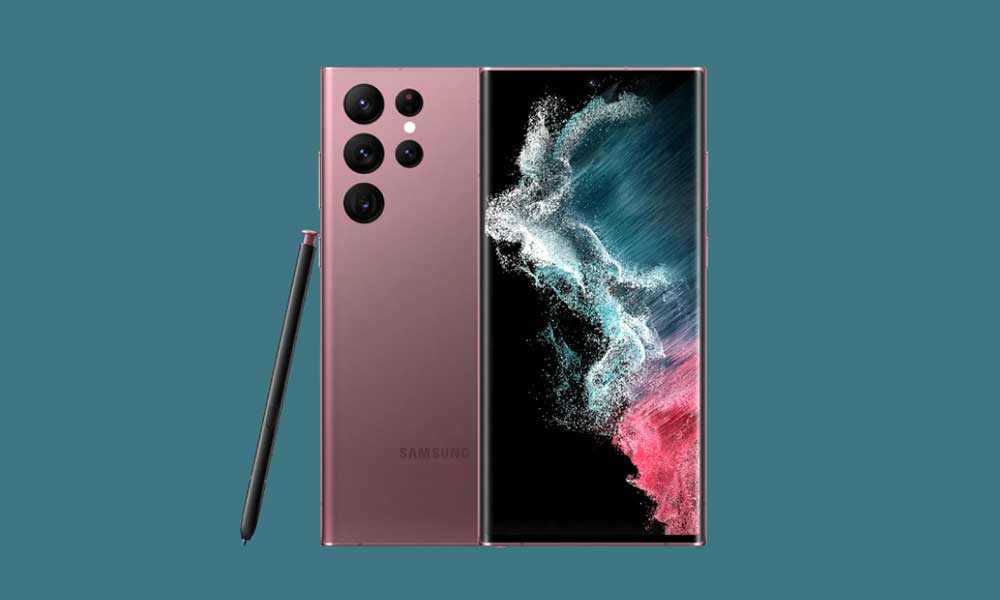The Galaxy S22 Ultra is Samsung’s most premium smartphone. It has top-of-the-line specs such as a 120Hz Dynamic AMOLED display, Snapdragon 8 Gen 1 processor, stunning cameras, and a good battery backup. You might have been impressed by the spec sheet and design and paid a hefty amount to purchase this. Despite being Samsung’s greatest phone, the users have faced multiple software-related issues like call dropping, black screen of death, and more.
Samsung Galaxy S22 Ultra users are facing another issue related to the screen. This time, it’s the flickering screen issue. And there’s no sure-shot answer as to what makes the Galaxy S22 Ultra screen flicker. A third-party app, a change in the system settings, or some hardware-related issues can cause it. In most cases, the screen flickering is a software bug that can easily be fixed through an update. In case you have not received an update, look at the possible workarounds to fix the issue listed below.
Also Read
Fix Samsung Galaxy S22 Ultra WiFi Issue | Not Connecting, Slow or No Internet
Fix: Samsung Galaxy S22 Ultra Keeps Crashing
Fix Samsung Galaxy S22 Ultra Won’t Recognize SIM Card Issue
Will Samsung Galaxy S22 Ultra Get Android 13 (One UI 5.0) Update?
Fix: Samsung Galaxy S22, S22 Plus, and S22 Ultra GPS Problem or Not Accurate
How to Install Custom ROM on Samsung Galaxy S22 Ultra
Fix: Samsung S22 Ultra Not Recording Video, Lagging, or Bad Quality
How to Fix If Volume Button Not Working on Samsung Galaxy S22 Ultra
Fix: Samsung S22 Ultra Moisture Detected Error
Fix: Samsung Galaxy S22, S22 Plus, and S22 Ultra Android Auto Not Working

According to some users, the Samsung Galaxy S22 Ultra display starts flickering after changing the resolution to QHD+. In some cases, using the in-display fingerprint scanner caused the screen to flicker. Some users have even placed the screen flickering issue on their Galaxy S22 Ultra while playing a video on YouTube.
The good is that Samsung has already acknowledged the screen flickering issue on the Galaxy S22 Ultra. The company has also promised a fix for the issue through a software update. Samsung has not announced a timeline as to when a hotfix will be released. Instead of keep-on waiting for the official update, go through the possible fixes, which we have listed below. These fixes are safe to try as it does not cause any problem or erase data on your phone.
Page Contents
Possible fixes to screen flickering issue on Samsung Galaxy S22 Ultra
Fix 1: Forced Restart
The screen flickering issue on your Galaxy S22 Ultra could be caused by an application running in the background. By doing a forced reset, the device refreshes device memory and kills all the applications in the background. To perform a forced reset, follow the steps mentioned below.
- Close all the recent apps.
- Press and hold the volume down (-) button and power button for a couple of seconds. Your phone will shut down. Keep holding the phone until the Samsung logo appears on the screen.
- After you see the logo, release the buttons and wait for the device to reboot.
Fix 2: Disable Hardware Overlays
You, or someone who uses your device, might have accidentally turned on the Hardware Overlays option. It flashes multiple colors on the screen when layers of content on the screen keep updating. Disabling the feature can help the display to get back to normal. Here’s how to do it.
- Open the Settings app.
- Go to System > Developer settings.
- Scroll down and find Hardware Overlays. Tap on the toggle next to it.
Fix 3: Reset Settings
The screen flickering issue might have been caused by changes in the Settings app. Removing the changes or keeping the settings options default could fix the issue.
- Open the Settings app.
- Search General Management.
- Tap on the Reset option.
- Now, tap on the Reset All Settings.
- Select the Reset Settings option.
- Enter the pin/password/pattern (if asked).
- Press the Reset button.
Fix 4: Boot the device in Safe Mode
Any third-party app might be creating problems on your smartphone, such as screen flickering. Therefore, our next method checks for this by booting the device in Safe Mode. By entering this mode, the device temporarily disables all third-party apps.
So, if the device is not facing the screen flickering issue, entering into the safe mode means that a third-party app is causing the issue. So, you need to remove that app after booting into the normal mode. Here’s how to enter into the Safe Mode in Samsung phones.
- Press and hold the power button for a few seconds.
- Tap and hold on to the Power Off symbol.
- Tap on Safe Mode.
Also Read
Fix 5: Clear Cache
In many software-related issues, clearing the cache does the trick. Clearing cache removes temporary stores files and requests the device to fetch the latest files. It could also help the device to fix the screen flickering issue. Follow the steps to clear the cache on your Samsung phone.
- Turn off your Samsung Galaxy phone.
- Press and hold the power button and volume up (+) key simultaneously. Your device will boot to recovery mode.
- Use the volume buttons to select Wipe cache partition.
- Press the power button.
- Once the cached data has been wiped, you will see a Reboot System Now option.
- Select the option and hit the power button to reboot your phone.
We hope that this guide was helpful to you. Let us know which method worked for you in the comments below.
